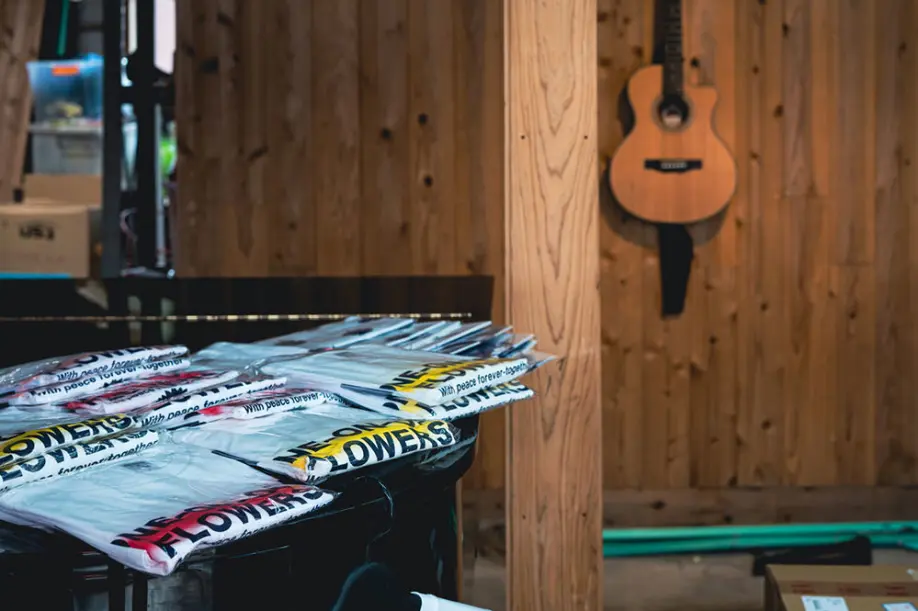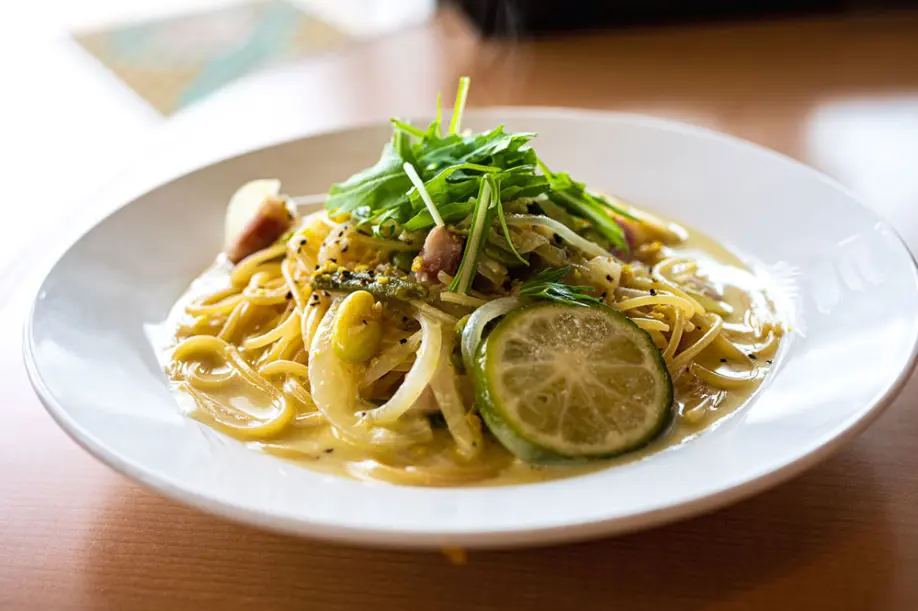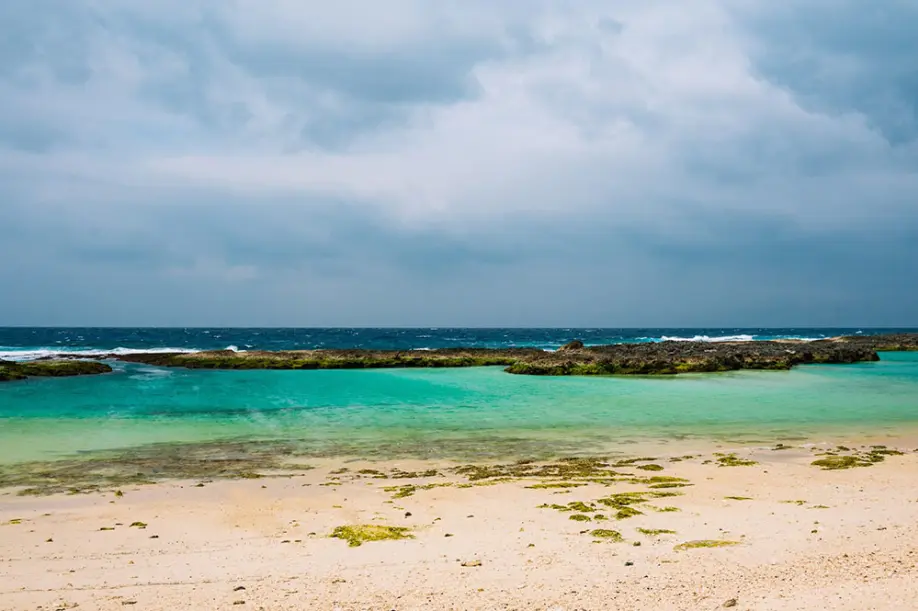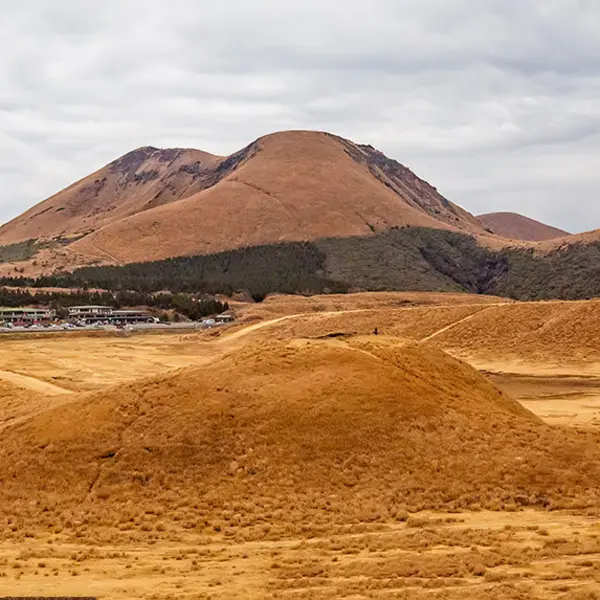
Kikai Island
The Island that Grows On You
Upon arriving on the charming island of Kikaijima, you might feel that it gives off a sleepy kind of vibe, but don't let that fool you. This island is live, and I mean that quite literally.
Kikaijima is made of live coral and is said to be the second-fastest-growing island in the world, rising from the sea at a blindingly fast 2 millimeters per year. Okay, it doesn't sound that fast. But in the past 100,000 years or so, a blink of an eye in the geological life of our planet, it has grown up from below the surface of the sea to over 200 meters high at its geological peak.

Because of its coral foundations, you’ll find that coral is used around the island for many purposes. In the Aden village, the narrow streets are lined with walls built up from coral stones gathered from around the area. Coral is found in Kikaijima’s external and interior décor, architecture, arts and crafts.

Despite inhabiting such a unique geological formation, the Kikaijima locals are very down-to-earth. Most residents are farmers, carrying on a tradition of sugar cane production that has driven the economy and lifestyles of the local people for generations. Listen to the words of the shimauta, the island folk songs (if you can pick them out of the thick Kikai dialect), and you'll hear the sadness of a people who were forced by the Satsuma feudal lords governing the island to produce sugar for trade, sometimes at the cost of their own family's starvation.
The sad days of forced labor have long since passed, but the island’s love of folk music remains. Perhaps this strong connection to music has lured several famous Japanese musicians to the island for semi-retirement. If you are lucky, you might end up at a venue where an impromptu musical performance by one of them might break out. And you might be surprised at what some of these venues might be.


As we drove along one of Kikai's main roads, my guide Naoki parked in the road in front of a small roadside shop ("local Kikai parking style," he assured me with a grin) and took me inside to introduce me to the owner, formerly a famous musician from Tokyo, and still quite young. While half the shop sold sundries and groceries, a small stage occupied the other half with a guitar, djembe drum, and a grand piano that served double duty as a display stand for locally produced T-shirts.
Sugar cane is no longer a source of sadness, but it still contributes strongly to the economy. Kokuto shochu, the local liquor using brown sugar, is made on the island in several breweries. Mr. Kitei, the owner of Asahi Shuzo, one of the island's major breweries, took me on a tour of his facilities. Asahi's liquor is popular not just on the island, but throughout Kagoshima Prefecture and even beyond for its strong yet smooth flavors. Their beautifully designed aging facility serves not only as a place to store the shochu, but also a place for gatherings, with an airy second story that has served as a stage for musical performances.


Although made from sugar, it would be technically incorrect to compare kokuto shochu to rum; it is created using a fermentation process similar to making Japanese sake. The alcohol content of shochu averages around 25%, but some kokuto shochu can reach over 40% alcohol, bringing it into the competitive range of, you guessed it, Japanese whiskys. Asahi Shuzo took advantage of this commonality between their shochu and other popular liquors and started aging some batches of their shochu in barrels, giving them the flavors of their famous cousins at a fraction of the price. Needless to say, in an era when Japanese whisky is either very expensive or difficult to find, kokuto shochu's popularity is surging.


Apart from the traditional, Kikaijima is paving a way forward through research and innovation. At the Kikai Institute for Coral Reef Sciences, a group of scientists is taking advantage of the island's unique geology to study the coral ecosystem carefully, looking for ways to protect the delicate coral from the ever-warming waters surrounding the island. One of the young researchers who recently returned from Australia gave me a tour of the facility in English and explained some of the things he is working on. The facility welcomes visitors at almost any time it is open, and the friendly staff is happy to give you a quick education on coral and the Kikaijima ecosystem. It is this friendly openness that makes the island such a delight to visit.


At Kikaijima Herb Farm, they are harvesting sakuna, a plant that is a staple of the local cuisine and is believed to be one of the reasons lifespans are so long in these islands. In fact, it goes by another name, chomeiso, which roughly translates to "long life herb" and inspires the local idiom, "eat one bite, live one day longer." The flavor of sakuna is reminiscent of celery if there is any accurate way to describe it. Locals love it fried as tempura, and I can attest that it goes down easy in that form alongside a cold beer.


Although sakuna grows wild in many places on the island, at Kikaijima Herb Farm they grow it as an organic crop, harvesting it in large quantities to be made into tea. There are also several beehives producing organic honey nearby. For an island once known mainly as kokuto jigoku, "sugar cane hell," locals are keen to develop new products that can be enjoyed on and off the island.
Over lunch, a delicious pasta made with local mikan citrus, Naoki invited me to try another local innovation: Toba Toba Cola. This natural craft cola is a blend of various spices and flavors sweetened with the local cane sugar. Craft colas are surging in popularity around Japan, and Toba Toba will certainly seize its share of fans with its flavorful hook. I couldn't resist buying a bottle (it comes as a syrup which is diluted to make a drink) to take home with me.


As my plane left the white beaches and turquoise waters of Kikaijima below us, I realized that many like me come to the island looking for an escape, if only briefly, from the pressure and anxiety of the urban world in which we live. While COVID prevention measures are firmly in place at all establishments, the island doesn't feel like a place where you need to be on guard during every waking hour. What I found in Kikaijima is not only a place of rest but a culture that is actively pushing back against overdevelopment and the destruction of our environmental resources. With its charming island songs and friendly local vibe, Kikaijima is the type of place that will grow on you, even faster than the island itself.
Sugira Beach

Learn about Kikaijima coral

Made on Kikaijima

Good Spirits

Sugar Road


Todd Fong
Photographer, mentor, story teller. Tokyo-based, Oaktown (Oakland, California) born. My writing and photography work includes Voyapon.com, "Sheila Kimono Style" (photo book), 365 Japan, and Metropolis. My curiosity about Japan, its culture and its history is matched only by the number of places in Japan I have yet to explore.
 Hiking Matsushima Olle: Course to Explore the Nature and Intriguing History of Amakusa Island
Hiking Matsushima Olle: Course to Explore the Nature and Intriguing History of Amakusa Island Mount Aso: Nature at Its Most Majestic
Mount Aso: Nature at Its Most Majestic Yakushima: Trekking through Japan’s thousands-year-old forest
Yakushima: Trekking through Japan’s thousands-year-old forest Kikuchi District - The Great Outdoors of Kyushu
Kikuchi District - The Great Outdoors of Kyushu To Hell and Back: Walk Through the Steamy Hot Springs of Unzen
To Hell and Back: Walk Through the Steamy Hot Springs of Unzen Hiking in Ebino Highlands: Explore the Crater Lakes in the Company of Friendly Deer
Hiking in Ebino Highlands: Explore the Crater Lakes in the Company of Friendly Deer Kyushu Olle: An Autumn Hike on the Okubungo Course
Kyushu Olle: An Autumn Hike on the Okubungo Course Driving Around Fukue Island: Hidden Churches and Stunning Beaches
Driving Around Fukue Island: Hidden Churches and Stunning Beaches Hiking Trails at Aso Kusasenri
Hiking Trails at Aso Kusasenri Cape Toi in Miyazaki: A Festival of Colors
Cape Toi in Miyazaki: A Festival of Colors




